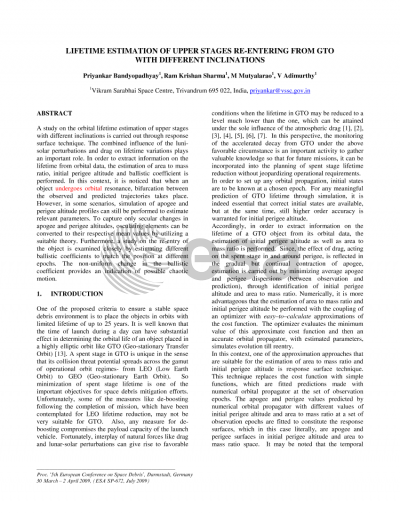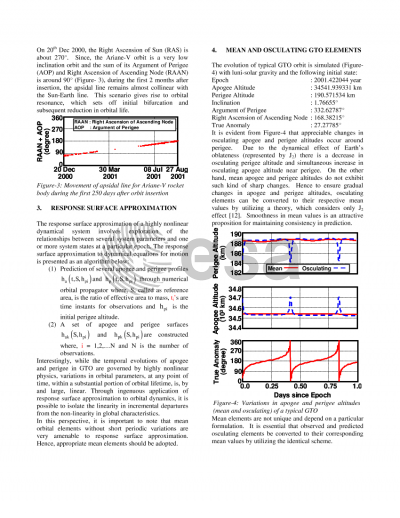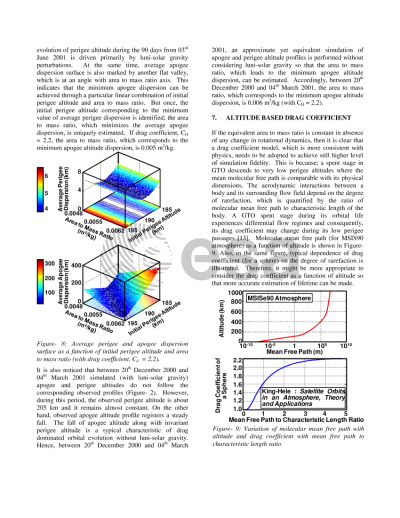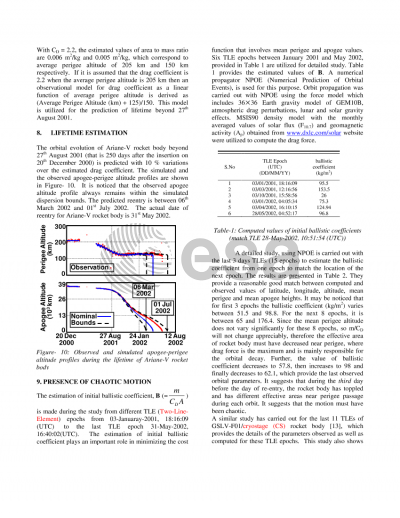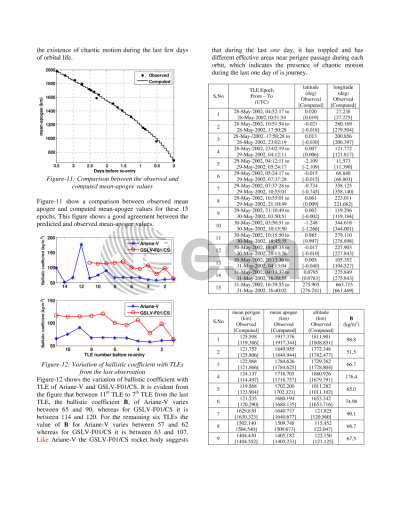Document details

Abstract
A study on the orbital lifetime estimation of upper stages with different inclinations is carried out through response surface technique. The combined influence of the lunisolar perturbations and drag on lifetime variations plays an important role. In order to extract information on the lifetime from orbital data, the estimation of area to mass ratio, initial perigee altitude and ballistic coefficient is performed. In this context, it is noticed that when an object undergoes orbital resonance, bifurcation between the observed and predicted trajectories takes place. However, in some scenarios, simulation of apogee and perigee altitude profiles can still be performed to estimate relevant parameters. To capture only secular changes in apogee and perigee altitudes, osculating elements can be converted to their respective mean values by utilizing a suitable theory. Furthermore, a study on the re-entry of the object is examined closely by estimating different ballistic coefficients to match the position at different epochs. The non-uniform change in the ballistic coefficient provides an indication of possible chaotic motion.
Preview
